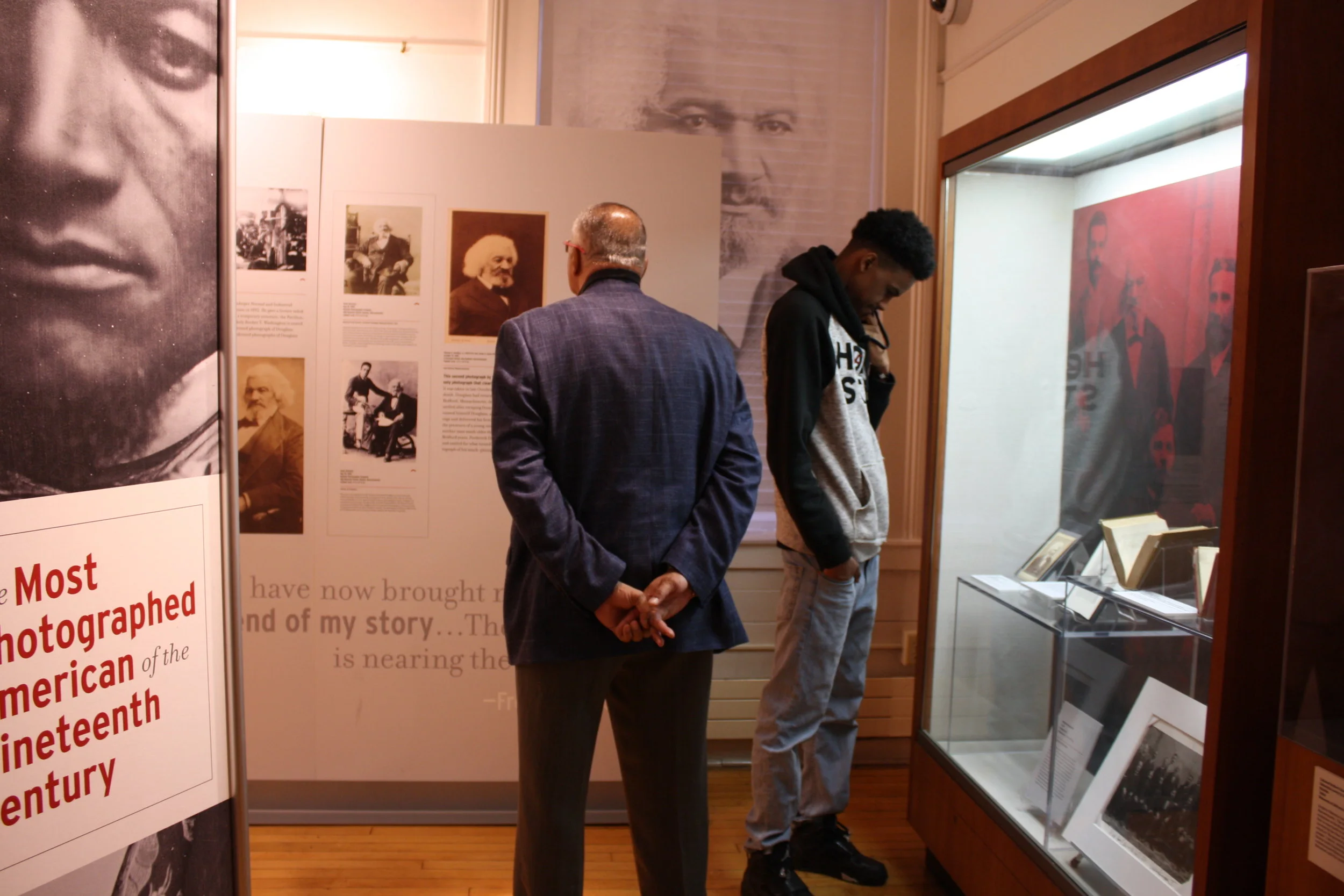42° 21' 35.7876'' N / 71° 3' 54.6516'' W
The Museum of African American History
The Museum of African American History inspires all generations to embrace and interpret the authentic stories of New Englanders of African descent, and those who found common cause with them, in their quest for freedom and justice. Through its historic buildings, collections, and programs, the Museum expands cultural understanding and promotes dignity and respect for all.
Site Program Offerings
Picturing Frederick Douglass: Exhibit Tour
Grades: 4 and up | Group size: 30 maximum
Join a MAAH educator to explore our historic sites and current exhibition, Picturing Frederick Douglass: The Most Photographed American of the 19th Century. This first-of-its-kind exhibit revolutionizes our knowledge of race and photography in 19th-century America. The photographs trace Douglass's visual journey from self-emancipated man to firebrand abolitionist to elder statesman.
Douglass' visual and stylistic evolutions narrate a photographic autobiography across a half-century of history and shows him reinventing himself, even as he sought to transform the country using photography as a tool of reform, and becoming an astute critic of visual culture.
The exhibit highlights Douglass' use of photography in a deliberate effort to elevate the image of the African American in contradiction to demeaning and inhumane depictions of black life often seen in the 18th and 19th centuries.
The Abiel Smith School Classroom: Giant Steps in a Small Space
Grades: 3-7 | Group size: 30 maximum
Pre- and post-visit curriculum packets available.
The Museum’s Abiel Smith School was built in 1835 and is now the oldest building erected in the country for the sole purpose of housing a black public school. Susan Paul - the daughter of the Reverend Thomas Paul, the first minister at the African Meeting House, and Catherine Paul, an educator, was a teacher at the Smith School and an abolitionist.
This interactive workshop provides today’s students with an opportunity to experience what it was like to go to school in 1835-1855, through a live historic interpretation of Susan Paul in the actual Smith School classroom. Taught by Susan Paul, the participants will learn how students learned to read, spell, cipher, and recite in the 1800s and compare what they learn today in their own classroom experience.
Dig and Discover: Black New Englanders of the 18th and 19th Centuries Archaeology Program
Grades: 3-12 | Group size: 30 maximum
This program can also be offered as an in-class outreach program.
In a hands-on, interactive workshop, students become Junior Archaeologists as they examine and identify actual artifacts based on the findings of archaeological studies at the Museum’s campuses. Students will be challenged to estimate an object’s time period of origin and make inferences about its use. Finally, the young archaeologists will craft a story and learn about the lives of people in the past using their artifacts as evidence. Each program is adapted by grade level and may include components such as sorting objects by time period, classifying artifacts, or applying archaeological methodology to a simulated dig site.
They Spoke Here: Abolitionist Debates
Grades: 10-12 | College groups | Group size: 30 maximum
Pre-visit lesson plan and curriculum packet provided in advance of scheduled visit.
Using authentic words from primary source materials, students participating in MAAH's Abolitionists' Debate program form teams and present opposing arguments. Their topics are formed by studying significant issues using historic lectures and meetings held by antislavery societies, debate clubs, and women’s groups who met in the African Meeting House on Beacon Hill before the Civil War. Students learn debating rules while presenting and defending issues and arguments in this format.

